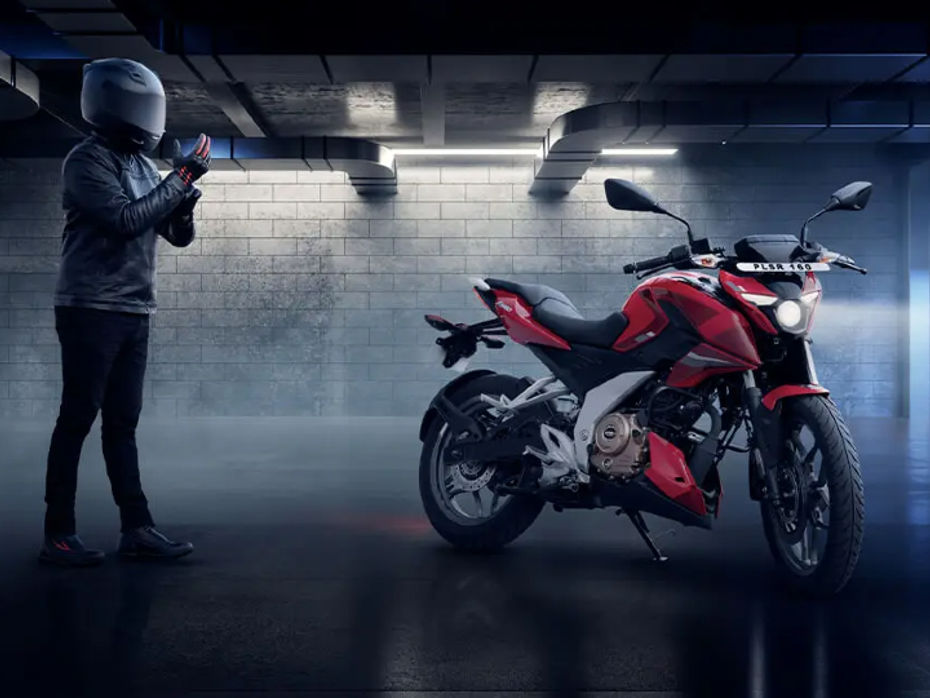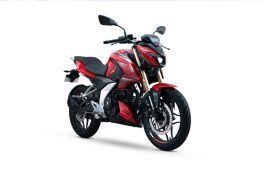
Bajaj Pulsar N160 vs Hero Xtreme 160R 4V | Which one is the 160cc...
- Aug 25, 2023
- Views : 6224


The Pulsar lineup gets a new addition as Bajaj has just launched the new Pulsar N160. This is the third bike born out of the all-new platform after the Pulsar N250 and the Pulsar F250. Consequently, it shares quite a bit of its genes with the quarter-litre twins. Here's everything you need to know:
The Pulsar N160 is priced at Rs 1,22,854 for the single-channel ABS variant and Rs 1,27,853 for the dual-channel ABS variant (ex-showroom Delhi). While the single-channel ABS variant is priced the same as the Pulsar NS160, the dual-channel ABS variant is Rs 4,999 dearer. Also, the Pulsar N160 is priced Rs 14,394 more than the disc variant of the Pulsar 150.
Rivalling the new Pulsar are other 160cc bikes like the Hero Xtreme 160R, Yamaha FZ-S Fi V3.0, Suzuki Gixxer, Honda X-Blade and the TVS Apache RTR 160 4V, however, this new Pulsar is the only motorcycle in its segment to offer dual-channel ABS.
The headlight cowl looks similar to the quarter-litre naked, and it comes with a projector headlight with LED DRLs as well. The indicators are bulbs, whereas the taillight is LED. The high-set tail section is complemented by a contoured split-seat setup. This, coupled with the single-piece handlebar, should ensure comfortable, upright ergonomics.
Nestled inside the chassis is the all-new oil-cooled 164.82cc engine that produces 16PS and 14.65Nm. To give you a perspective, the Pulsar NS160 makes 17.2PS and 14.6Nm from the 160.3cc oil-cooled engine. Despite a lower power output, this new bike offers more torque throughout its powerband, thus promising an exciting riding experience.
The bike is built on the same chassis as the 250cc Pulsars, so it gets the same frame, 31mm telescopic fork for the single-channel ABS variant and 37mm telescopic fork for the dual-channel ABS variant coupled with a monoshock.
It is available with single channel and dual channel ABS, wherein the dual channel ABS variant features 300mm disc at the front while the single channel ABS variant gets a 280mm front disc. Both variants come equipped with 230mm rear discs. The bike rides on 17-inch wheels wrapped with 100-section tyre at the front and a 130-section tyre at the rear.
The N160 gets a generous 14-litre fuel tank, on whose cover an USB charging port is embedded. The single channel ABS variant weighs 152 kg while the dual-channel ABS variant weighs 154 kg, which makes this one of the heaviest bikes in its segment.
While the Pulsar N160 is meant to be in line with its quarter-litre sibling from a design perspective, Bajaj could've at least introduced unique quirky colours as this bike is mainly targeted to a youthful audience. The current colours offered are the same as the ones available on the N250, hence robbing the N160 its distinctive personality. Also, Bajaj could’ve kept a check on the weight of the bike.
We appreciate Bajaj making this bike an exciting proposition, especially with the dual-channel ABS option. However we do wish the bike was lighter. That said, we will be riding this bike soon, so stay tuned to this space for our first ride review.


Bajaj Pulsar N160 vs Hero Xtreme 160R 4V | Which one is the 160cc...

Updated Bajaj Pulsar N160 vs TVS Apache RTR 160 4V: Image Comparison

2024 Bajaj Pulsar N160: Top 5 Highlights

EXCLUSIVE: Bajaj Pulsar N160 With Inverted Fork Launched At Rs 1.39...

2024 Bajaj Pulsar N150 And N160 Launched With Updated Instrument...

2024 Bajaj Pulsar N160 Spied Ahead Of Launch

Updated Bajaj Pulsar N160 Spied With Inverted Fork

2023 Hero Xtreme 160R: Top Alternatives For The Same Price

Hero Xtreme 160R 4V vs TVS Apache RTR 160 4V vs Bajaj Pulsar N160:...
 Bajaj Pulsar N150
Bajaj Pulsar N150
 Bajaj Pulsar NS160
Bajaj Pulsar NS160
 TVS Apache RTR 160 4V
TVS Apache RTR 160 4V
 Hero Xtreme 160R 4V
Hero Xtreme 160R 4V
 Bajaj Pulsar 150
Bajaj Pulsar 150
India's largest automotive community
 Bajaj Pulsar NS200
Rs. 1.58 Lakh
Bajaj Pulsar NS200
Rs. 1.58 Lakh
 Bajaj Pulsar 125
Rs. 83,846
Bajaj Pulsar 125
Rs. 83,846
 Bajaj Pulsar NS 125
Rs. 1.01 Lakh
Bajaj Pulsar NS 125
Rs. 1.01 Lakh
 Bajaj Pulsar NS160
Rs. 1.47 Lakh
Bajaj Pulsar NS160
Rs. 1.47 Lakh
 Bajaj Pulsar 150
Rs. 1.10 Lakh
Bajaj Pulsar 150
Rs. 1.10 Lakh
 Bajaj Chetak
Rs. 1.20 Lakh
Bajaj Chetak
Rs. 1.20 Lakh
![Bajaj Chetak [2020 - 2024] Bajaj Chetak [2020 - 2024]](https://media.zigcdn.com/media/model/2024/Sep/bajaj-chetak-2025-right-side-view_135x90.jpg) Bajaj Chetak [2020 - 2024]
Rs. 99,998
Bajaj Chetak [2020 - 2024]
Rs. 99,998